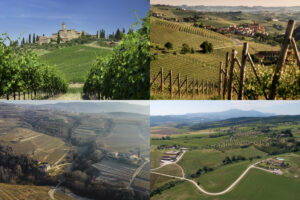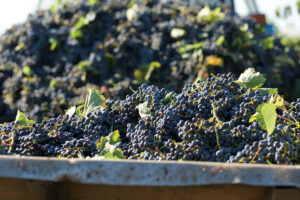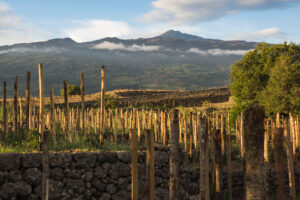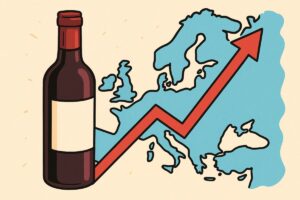The 1,100% increase in the price of carrots from producer to final consumer confirms 2009 as the record-breaking year for price hikes in agriculture between actual production costs and final price for consumers due to the decrease in production prices of an average 16% and a corresponding increase in consumption of food products (+0.9%). This is the result of the report by Italian agricultural union Coldiretti titled “Operation for the truth on Italians’ food spending” that was presented recently in Rome together with several other consumer associations (Adoc, Adusbef, Codacons and Federconsumatori).
According to Coldiretti, Italians have not benefited from the strong decrease in agricultural prices that have actually caused the risk of a total abandonment of countrysides because of the crash in the value of products at origin: carrots have fallen 71%, peaches 53%, wheat 30% and grapes 19% according to an ISMEA survey conducted in August 2009.
One of the most significant examples of this situation is that of the price of wheat which is actually much lower today than it was 25 years ago at a value for producers of about 14 cents per kilo, 35% less than in 1985. And, explained Coldiretti, if in 1985 the price of wheat was 23 cents per kilo and the price of bread was 52 cents, while today the price of wheat is 14 cents while a kilo or bread is sold at 2.7 euros, the increase for consumers is over 19 times higher. Thus, the few cents that farmers are paid for the food they produce become several euros for the final consumer.
More specifically the increases over four times for grapes and milk, over five times for pasta and peaches, and more than six for lettuce. Italians spend 205 billion euros per year for food products (141 billion for home consumption and 64 billion outside of the home) which represents 19% of total family spending. Coldiretti denounces this trend and believes that it is necessary to interrupt it because it is causing the average Italian to become poorer and creating less incentive to continue agricultural work during time of economic crisis.
According to Coldiretti, large-scale distribution centers, which hold a food market quota of 71%, represent the middle man that is strangling the passage of food from the fields to dinner tables. There are just a few large acquisition platforms with almost monopolistic power allowing them to sell goods below cost thus putting at risk the competitiveness of Italian production.
For this reason Coldiretti believes it is necessary that government authorities should investigate whether they are abusing their dominant position and forcing thousands of small farmers who have no bargaining power to accept the prices they offer. Coldiretti also believes that large-scale distribution centers have a duty to consumers to offer clearer indications on the origin of products and making information more transparent. Coldiretti is also asking for the verification of conditions that would reserve special aisles in supermarkets for goods produced in Italy thus making it clearer which are the true items that are locally produced. False Italian products must be banned as well as occult advertising and commercial operations that do not demonstrate how much farmers are being paid and how much the profit margin is for these distributors.
The president of Coldiretti, Sergio Marini announced that the organization is accelerating its project to create an entirely Italian food market, which has become necessary to create for the survival of Italian farmers and the goods they produce. “The goal” – noted Marini – “is to cut intermediaries and to be able to offer through agricultural consortiums, cooperatives, farmer’s markets, and agritourisms products that are 100% Italian from farmers at the right price.
The “100% Italian” agricultural product signed by farmers will be offered through an extended national commercial network that will involve markets in the countryside, cooperatives, agrarian consortiums, agritourisms, and agricultural companies, and will also include a network of zero kilometers restaurants and the distributors who intend to participate. The effect of the reduction in passages and intermediaries with a more direct relationship between farmers and consumers guarantees an increased efficiency that will ensure convenient acquisitions for families and sustain the earnings of farmers during a moment of economic difficulty”.
The Price of Products from the Field to the Dinner Table
Product – Production Price – Consumer Price - Increase
Field/Table Peaches – 0.31 euro/kg – 1.75 euro/kg - 465%
Grapes – 0.47 euro/kg - 2 euro/kg - 326%
Lettuce – 0.26 euro/kg – 1.6 euro/kg - 515%
Carrots – 0.10 euro/kg – 1.2 euro/kg – 1,100%
Pasta – 0.20 euro/kg – 1.4 euro/kg - 400%*
Pane – 0.14 euro/kg – 2.7 euro/kg – 1,828%
Milk – 0.30 euro/litre – 1.35 euro/litre - 350%
Source: elaborated by Coldiretti from ISMEA and SMS Consumer data
laborazioni Coldiretti su dati Ismea e Sms Consumatori ad agosto 2009
*Based on calculations that consider 1.4 kilos of flour are necessary to produce one kilo of pasta.
The Decline in Agricultural Production in 2009
Carrots -71%
Peaches -53%
Durum wheat -30%
Wheat -33%
Milk -30%
Grapes -19%
Source: Coldiretti elaboration based on ISMEA data August 2009
The Price of Wheat is Lower Than 25 Years Ago
1985, 1990, 1995, 2006, 2007, 2008, 2009
Wheat – 0.23 – 0.19 – 0.16 – 0.15 – 0.22 – 0.24 – 0.14
Bread – 0.52 – 0.83 – 1.03 – 2.4 – 2.6 – 2.65 – 2.7
Source: Coldiretti elaborations on data from the Chamber of Commerce, ISMEA, SOS Consumers
The Main Large-Scale Buying Centers and their Market Quota
1 – Centrale Italiana (Coop, Despar, Sigma, Il Gigante), 23%
2 - Intermedia (Auchan, Pam, Bennet, Sun, Crai, Lombardini), 19%
3 - Sicon (Conad, Interdis, Rewe), 17%
4 - Gd Plus (Carrefour, Finiper, Agorà), 17%
5 - Esselunga (Esselunga), 9%
6 - Esd Italia (Selex), 9%
7 - Sisa/Coralis (Sisa, Coralis), 4%
Source: Coldiretti elaborations on data from
Federdistribuzione
Copyright © 2000/2025
Contatti: info@winenews.it
Seguici anche su Twitter: @WineNewsIt
Seguici anche su Facebook: @winenewsit
Questo articolo è tratto dall'archivio di WineNews - Tutti i diritti riservati - Copyright © 2000/2025








































































































































































































